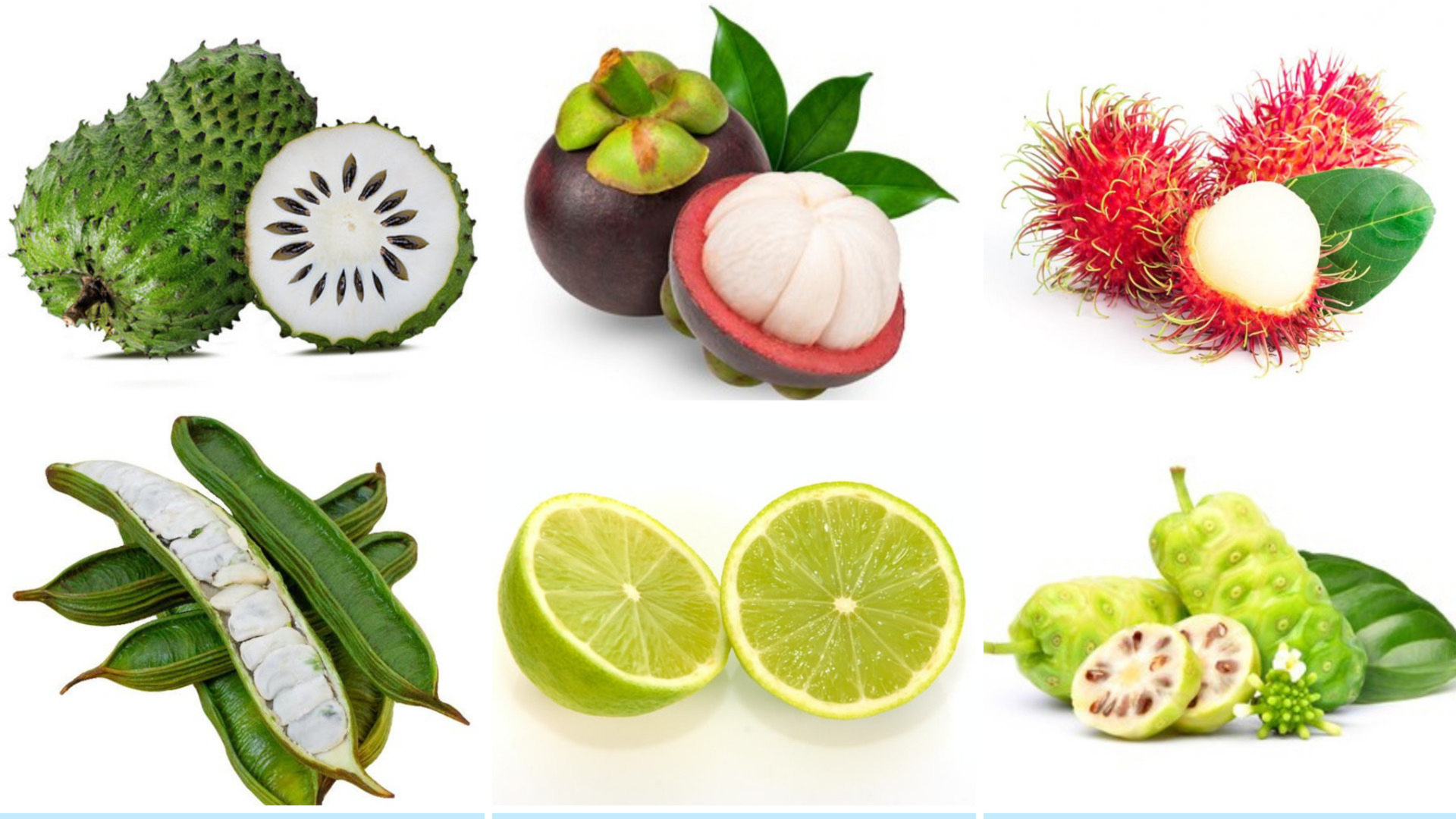If you are from way up North or way down South, then your first visit to equator-hugging countries probably had you starry-eyed over the rainbowed array of tropical fruits. I often ask, “How did I live for so many years without x, y, or z fruits?”
Nowadays, you can find a variety of imported fruits in North American grocery stores, but they just don’t taste the same as when you get them fresh from the source… no preservatives, no ripening in a box, just fresh off the tree. So today, we’re talkin’ soursop, mangosteen, mamoncillo, noni, rambutan, citrus fruits and why they are so delicious, great for your health, and how the locals eat them. Here it goes:
Tropical Fruits: #1 Soursop

Otherwise known as Guanabana in Spanish, is a large spiky green fruit that can grow to weigh up to 10-15 pounds.
The white flesh under the skin must be dug out and separated from the seeds. Then it is often thrown into a blender to make a natural smoothie or juice.
It has cancer-fighting properties, and the leaves are often used to make a tea to soothe the stomach.
Tropical Fruits: #2 Mangosteen
Is a delicious purple fruit with a green stem. The way of eating this fruit is like a tangerine: peel the skin off to reveal a few white fleshy slices of fruit. Most will have a black seed that you can spit out, or plant to grow your own mangosteen tree. This highly favored fruit is rich in antioxidants.
Tropical Fruits: #3 Mamoncillo & Rambutan

These grape-like fruits are common to eat while sitting on the patio in the afternoon, so you can easily toss the peel into the yard as you work your way through an entire bowl.
The mamoncillo has a smooth green shell, whereas the rambutan has thick soft red hairs pointing out of the dark red shell.
The fruit is similar, a grape-like texture around one pit.
Again, these are high in Vitamin C and antioxidants, which help fight free radicals in the body.
Tropical Fruits: #4 Guama
Known as guaba in Panama, this fruit does not provide much substance, but it is a sweet snack and fun to eat. The white cotton-like pulp can be peeled or sucked off the large black seeds. The tree is commonly used for shade on coffee and cacao farms.
Tropical Fruits: #5 Citrus
I did not realize how many varieties of lime exist before moving to Belize, and the preferred way to consume them is definitely in a “chicha de limon,” or basically homemade lemonade. There are also tangerines, grapefruit, and oranges that flourish in many backyards here. As most of us know, citrus is a fantastic Vitamin-C boost.
Tropical Fruits: #6 Noni
Not the most delicious or the most widely known, but it is probably the best for you. Noni is a green, bumpy fruit that turns almost white when it is ripe. It’s slightly stinky and doesn’t have a lot of flavor, but some locals blend it with fresh sugarcane juice or other fruits and consume it for its anti-aging benefits. It is very hydrating and good for the skin.
There are so many more fruits I could cover here, but these are the ones that were new to me, so let me know in the comments if you would like a part 2 and share with me which of these fruits you have tried!
by: Megan Thompson


